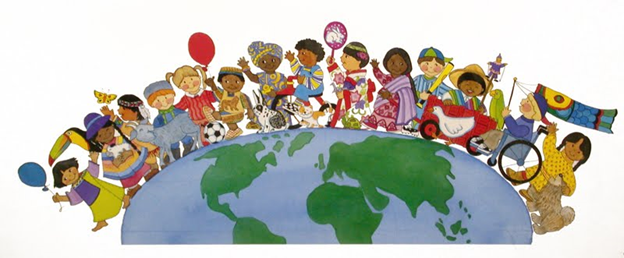From zero to the transnational business hero
Business today is a matter of great interest to the youth of today's era or generation. Many things can be obtained from running a business, not merely about profit or money although it is the main purpose of running a business that is to gain profit. But from running the business we can get many benefits for ourselves and others. As well as broadening insights about the real world or extending relationships with others. Recalling the social principle of life also requires others, but still should not always rely on others. With any business we can develop ourselves and hone skills or orientation mindset. Opening a business can also benefit others like opening employment and offering things that are mutually beneficial and necessary for others.
At a young age usually the soul to do business has started to fluctuate even very eager to run it, but that if we see from the profit alone if successful later. To be able to start the business must be gradual and have a high passion. From how we set the initial plan up to the strategy for the future. Surely everyone wants a business that is developing even very advanced in the future, starting from small business even if able to touch the international sphere. In this article will be explained about the development of young businessmen from Thailand who has a Transnational company in the field of snack food snacks. Transnational itself is one of the business strategy in terms of expanding the scope of a company over the boundaries of the country's sovereignty but still retaining the characteristic or distinctive of its origin. Transnational corporation itself is a company that was originally formed as a holding company and will be developed or produces its own subsidiaries in various countries but still managed or arranged by the parent company.
Contributor:
Rivaldi Gama
What is transnational firm?
Hence, there are forces of decentralization and dispersal, as well as forces of centralization and global coordination. Develop and operate systems units at each level of corporate activity regional, national, and international. To serve local needs, there should be host country systems units of some magnitude. Regional systems units should handle telecommunications and systems development across national boundaries that take place within major geographic regions (European, Asian, American). Transnational systems units should be established to create the linkages across major regional areas and coordinate the development and operation of international telecommunications and systems development. What do you recommend to the senior management leaders of this company, who now want to pursue a transnational strategy and develop an information systems architecture to support a highly coordinated global systems environment? The foreign divisions will resist efforts to agree on common user requirements; they have never thought about much other than their own units’ needs. The systems groups in American local sites, which have been enlarged recently and told to focus on local needs, will not easily accept guidance from anyone recommending a transnational strategy. It will be difficult to convince local managers anywhere in the world that they should change their business procedures to align with other units in the world, especially if this might interfere with their local performance. After all, local managers are rewarded in this company for meeting local objectives of their division or plant.
Finally, it will be difficult to coordinate development of projects around the world in the absence of a powerful telecommunications network and, therefore, difficult to encourage local users to take on ownership in the systems developed. By identifying the critical core business processes, you begin to see opportunities for transnational systems. The second strategic step is to conquer the core systems and define these systems as truly transnational. The financial and political costs of defining and implementing transnational systems are extremely high. Therefore, keep the list to an absolute minimum, letting experience be the guide and erring on the side of minimalism. By dividing off a small group of systems as absolutely critical, you divide opposition to a transnational strategy. At the same time, you can appease those who oppose the central worldwide coordination implied by transnational systems by permitting peripheral systems development to progress unabated, with the exception of some technical platform requirements. And then choose an approach. Avoid piecemeal approaches. These surely will fail for lack of visibility, opposition from all who stand to lose from transnational development, and lack of power to convince senior management that the transnational systems are worth it. Likewise, avoid grand design approaches that try to do everything at once. These also tend to fail, because of an inability to focus resources. Nothing gets done properly, and opposition to organizational change is needlessly strengthened because the effort requires huge resources. An alternative approach is to evolve transnational applications incrementally from existing applications with a precise and clear vision of the transnational capabilities the organization should have in five years. This is sometimes referred to as the “salami strategy,” or one slice at a time.
One of the worst situations to avoid is to build global systems for the sake of building global systems. From the beginning, it is crucial that senior management at headquarters and foreign division managers clearly understand the benefits that will come to the company as well as to individual units. Although each system offers unique benefits to a particular budget, the overall contribution of global systems lies in four areas. Global systems—truly integrated, distributed, and transnational systems contribute to superior management and coordination. A simple price tag cannot be put on the value of this contribution, and the benefit will not show up in any capital budgeting model. It is the ability to switch suppliers on a moment’s notice from one region to another in a crisis, the ability to move production in response to natural disasters, and the ability to use excess capacity in one region to meet raging demand in another. A second major contribution is vast improvement in production, operation, and supply and distribution. Imagine a global value chain, with global suppliers and a global distribution network. For the first time, senior managers can locate value-adding activities in regions where they are most economically performed. Third, global systems mean global customers and global marketing. Fixed costs around the world can be amortized over a much larger customer base. This will unleash new economies of scale at production facilities. Last, global systems mean the ability to optimize the use of corporate funds over a much larger capital base. This means, for instance, that capital in a surplus region can be moved efficiently to expand production of capital-starved regions; that cash can be managed more effectively within the company and put to use more effectively. These strategies will not by themselves create global systems. You will have to implement what you strategize.
Your success as a change agent will depend on your legitimacy, your authority, and your ability to involve users in the change design process. Legitimacy is defined as the extent to which your authority is accepted on grounds of competence, vision, or other qualities. The selection of a viable change strategy, which we have defined as evolutionary but with a vision, should assist you in convincing others that change is feasible and desirable. Involving people in change, assuring them that change is in the best interests of the company and their local units, is a key tactic. Choice of change strategy is critical for this problem. At the global level there is far too much complexity to attempt a grand design strategy of change. It is far easier to coordinate change by making small incremental steps toward a larger vision. Imagine a five-year plan of action rather than a two-year plan of action, and reduce the set of transnational systems to a bare minimum to reduce coordination costs.
The key to this problem is to involve users in the creation of the design without giving up control over the development of the project to parochial interests. The overall tactic for dealing with resistant local units in a transnational company is cooptation. Cooptation is defined as bringing the opposition into the process of designing and implementing the solution without giving up control over the direction and nature of the change. As much as possible, raw power should be avoided. Minimally, however, local units must agree on a short list of transnational systems, and raw power may be required to solidify the idea that transnational systems of some sort are truly required.
How should cooptation proceed? Several alternatives are possible. One alternative is to permit each country unit the opportunity to develop one transnational application first in its home territory, and then throughout the world. In this manner, each major country systems group is given a piece of the action in developing a transnational system, and local units feel a sense of ownership in the transnational effort. On the downside, this assumes the ability to develop high-quality systems is widely distributed, and that, a German team, for example, can successfully implement systems in France and Italy. This will not always be the case. A second tactic is to develop new transnational centers of excellence, or a single center of excellence. There may be several centers around the globe that focus on specific business processes. These centers draw heavily from local national units, are based on multinational teams, and must report to worldwide management. Centers of excellence perform the initial identification and specification of business processes, define the information requirements, perform the business and systems analysis, and accomplish all design and testing. Implementation, however, and pilot testing are rolled out to other parts of the globe. Recruiting a wide range of local groups to transnational centers of excellence helps send the message that all significant groups are involved in the design and will have an influence.
Why transnational strategy?
Tob began to think of how his company rose to the level of a Transnational company. Tob initially gain knowledge about business development at the University. It comes to the idea that when he wants to succeed in developing his company he also needs to have relationships and financial assistance by other parties. Finally Tob decided to submit a proposal to the Seven Eleven company to market its products. But still there are things that make Tob hassle to take care of the feasibility of the product from in the case, sterilization factory, the number of employees, etc.. Given Tob company itself is an independent company or including individual companies and very traditional in terms of production and marketing. Finally the Seven Eleven company approved the proposal from Tob on the condition that Tob must be able to meet all the standards set by Seven Eleven and must produce on a large scale to be marketed in various outlets of Seven Eleven in various countries. It is also the case that Tob thought very hard how to get that much capital, but still he never gave up to get it and finally in 2003 Tob has the official company Tao Kae Noi Food and Marketing Co., Ltd.. Tao Kae Noi Food and Marketing Co., Ltd. is now moving in 3 segment which is snack, restaurant, and Seasoning Powder.
At the age of 23 at that time that is still very young to run a big business. Tob has received various certificates as well as CODEX GMP from Global Food Certification Service by Codex GMP from U.K, Thailand Trusted Quality, Ministry of Public Health of Thailand, Halal by the Central Islammic of Thailand and etc. Starting from his own small business with his strategy and brilliant thought he was able to become one of the young businessmen in Thailand who are very successful and very well know there.





